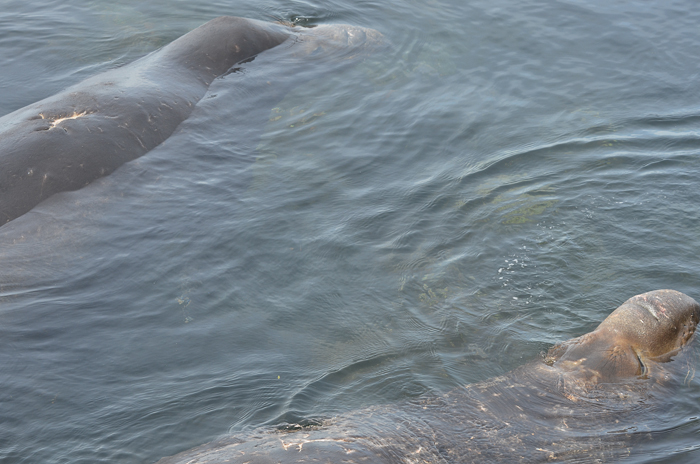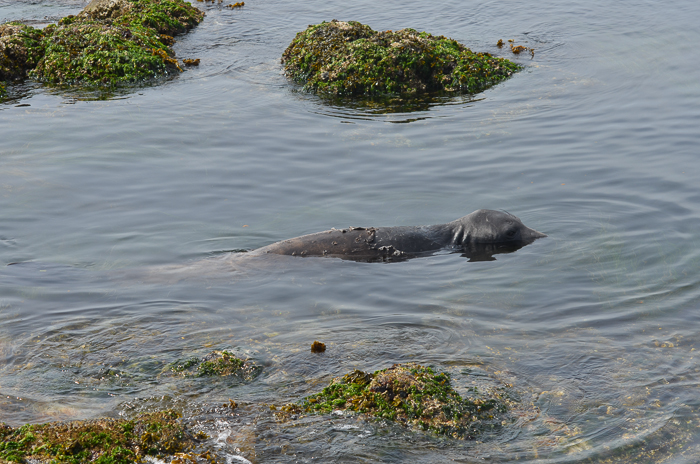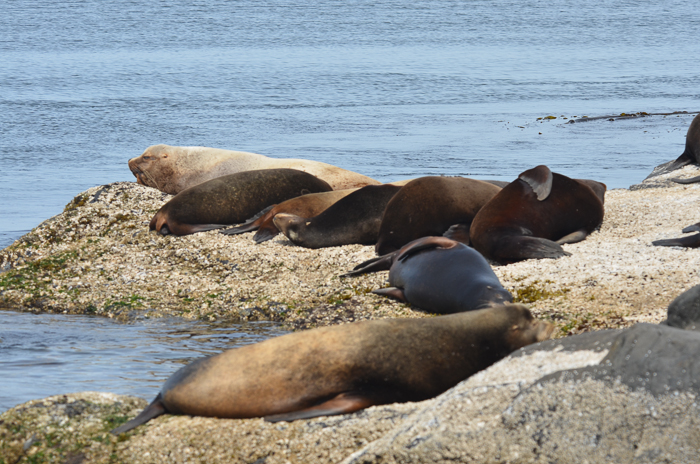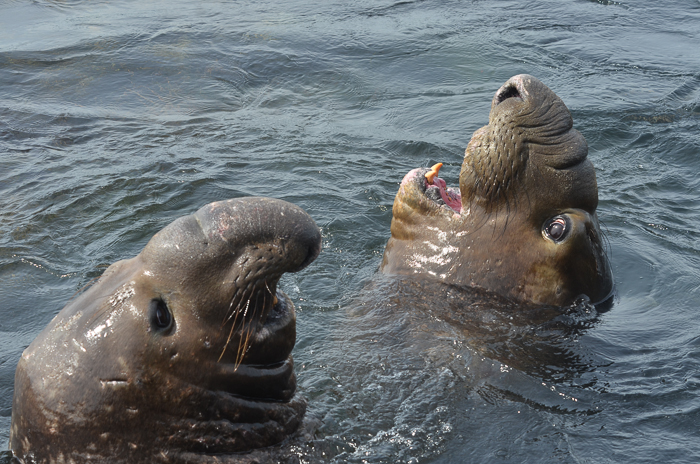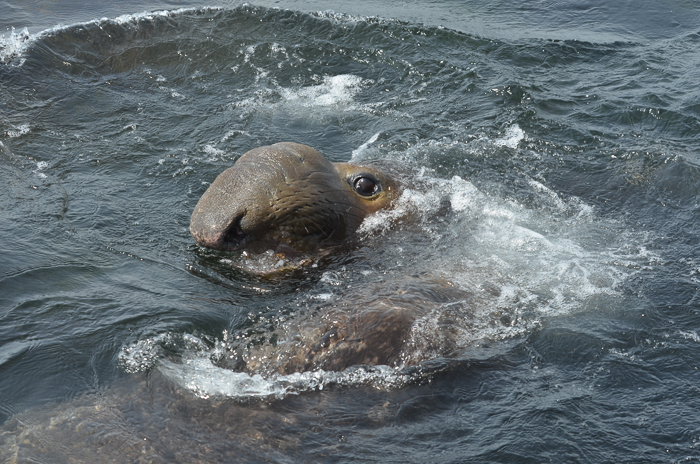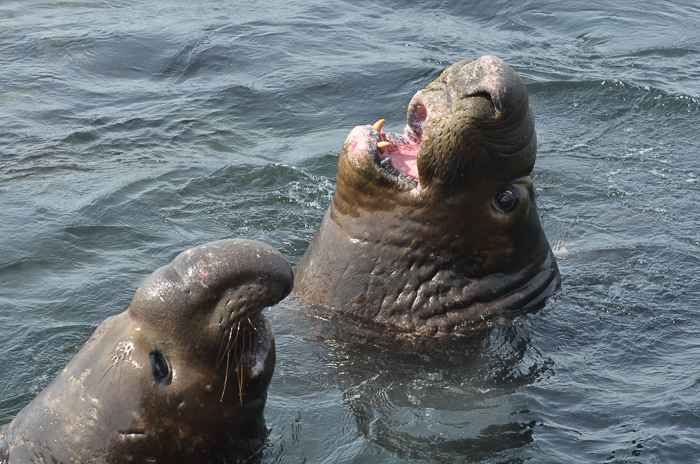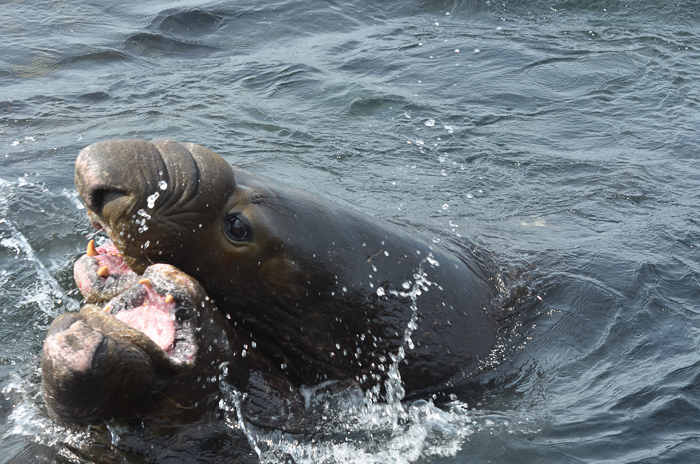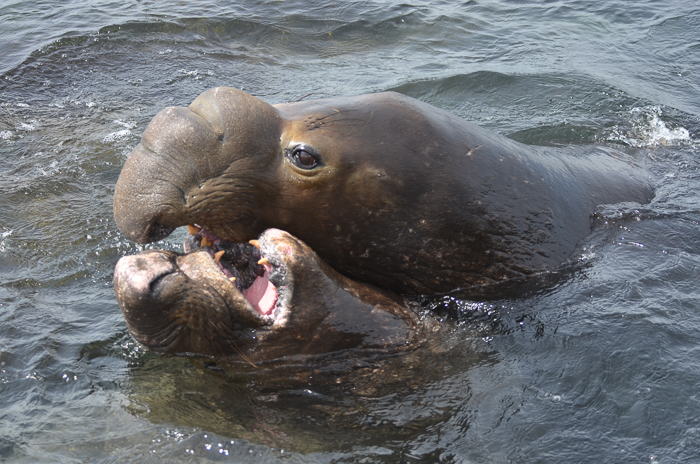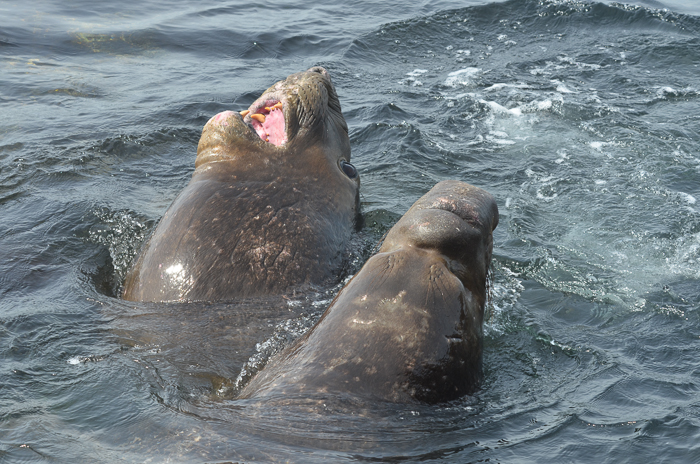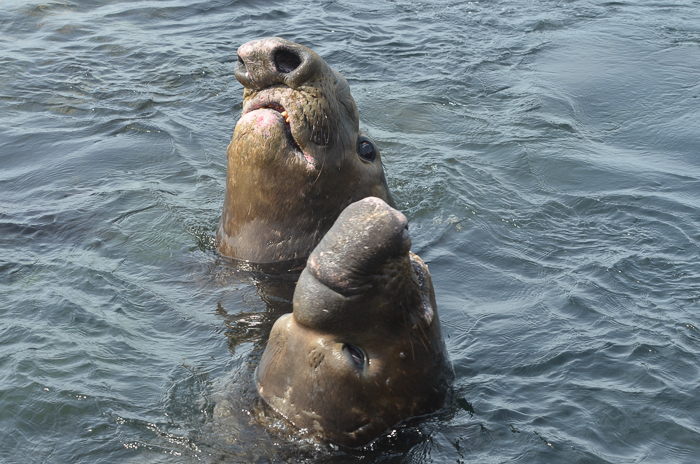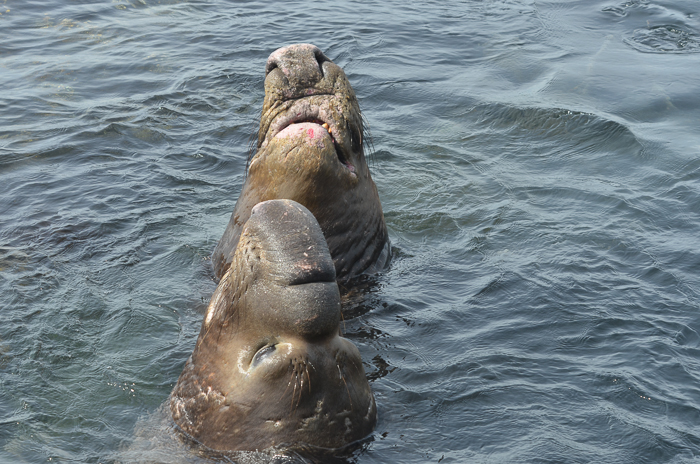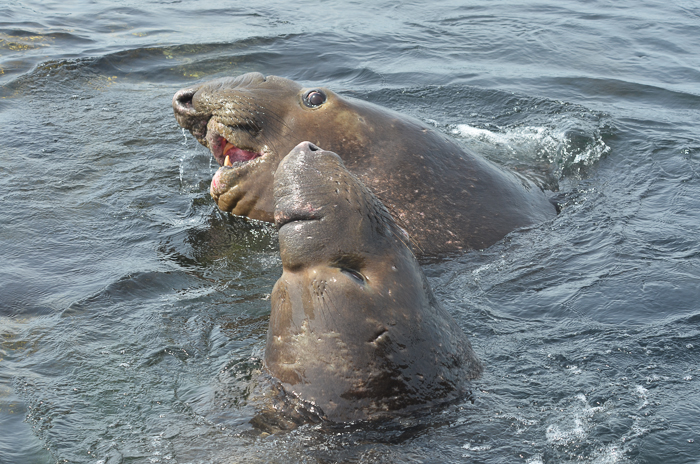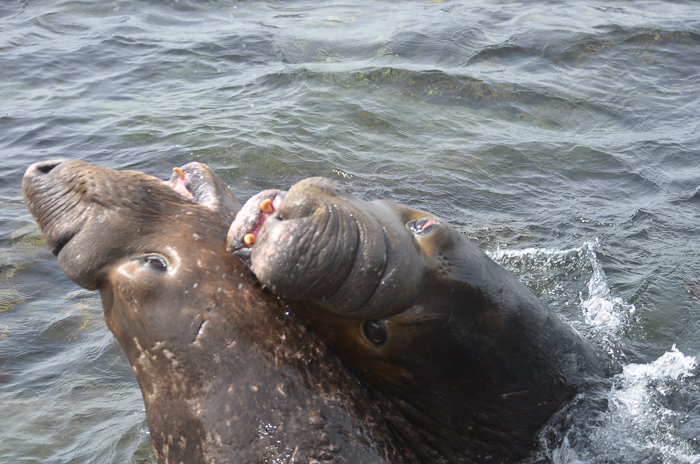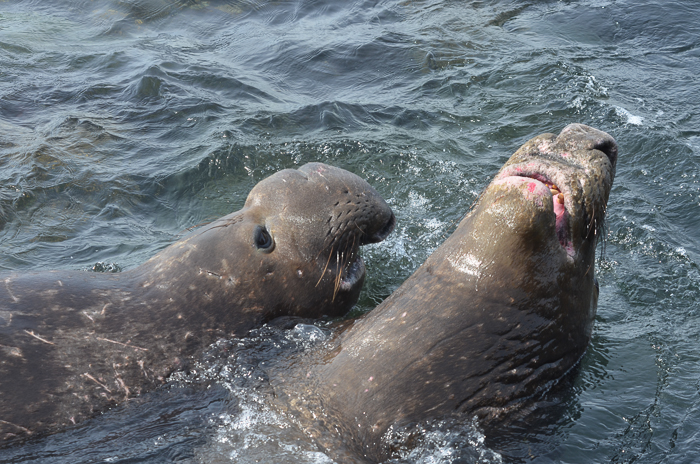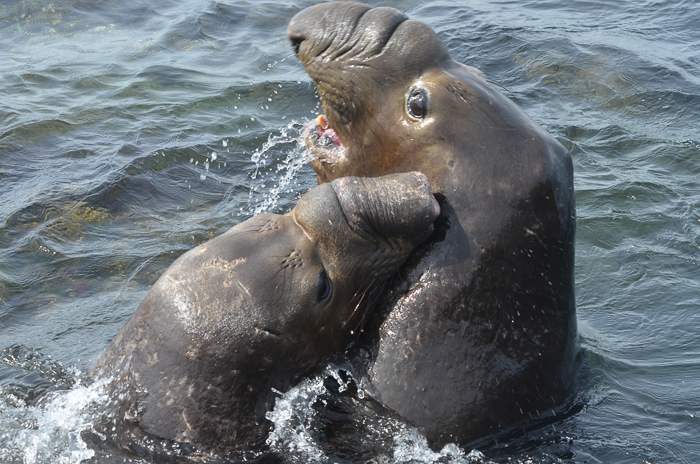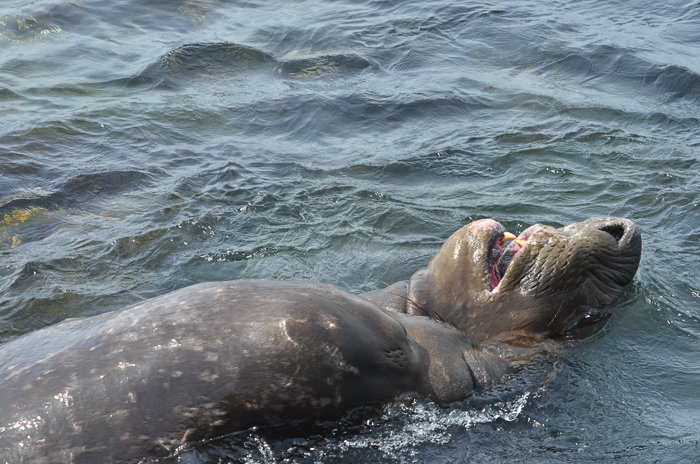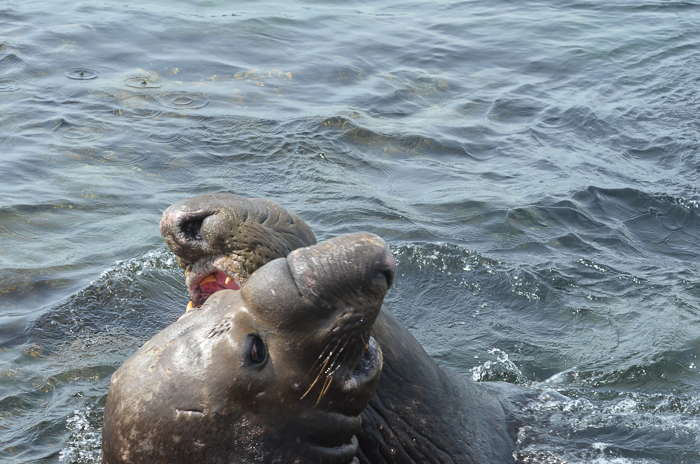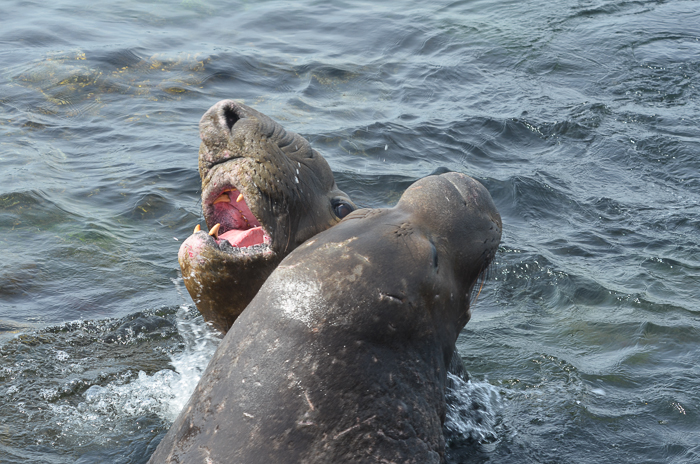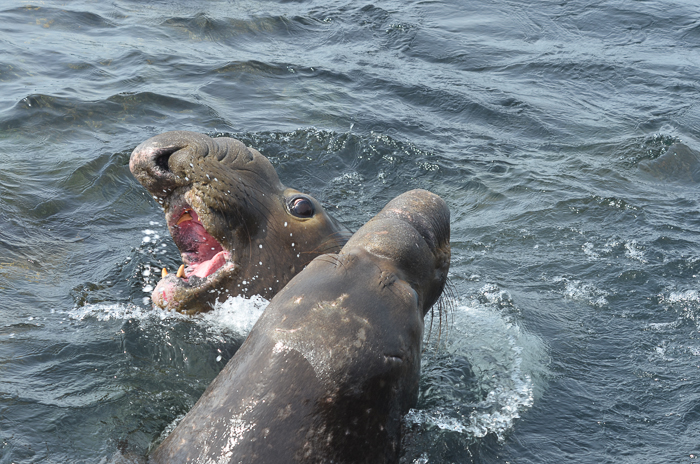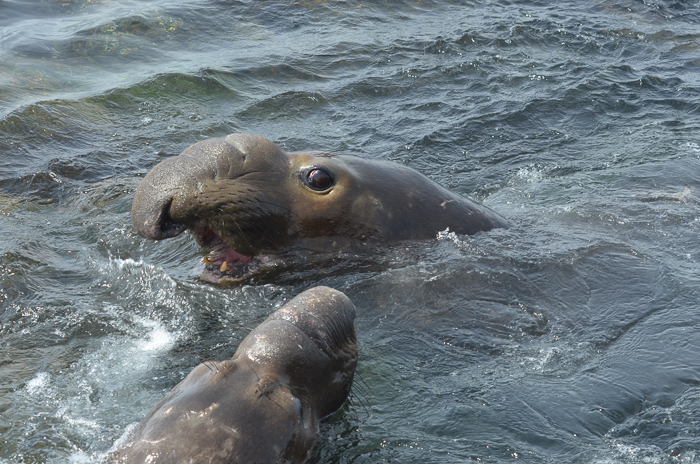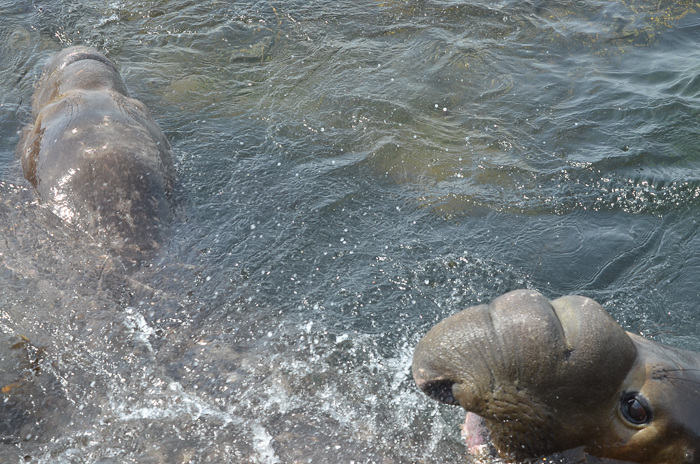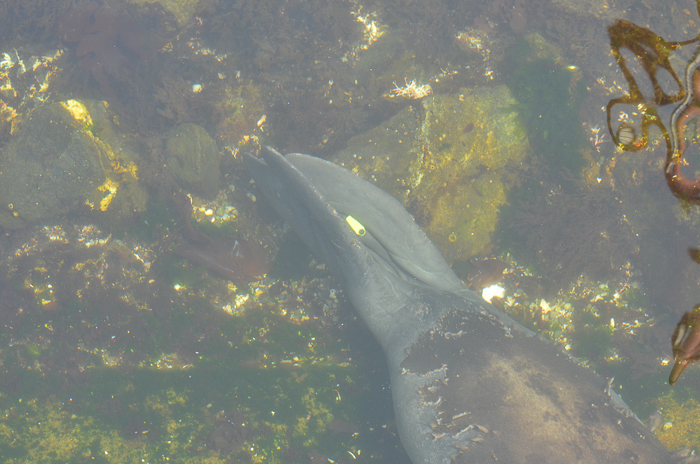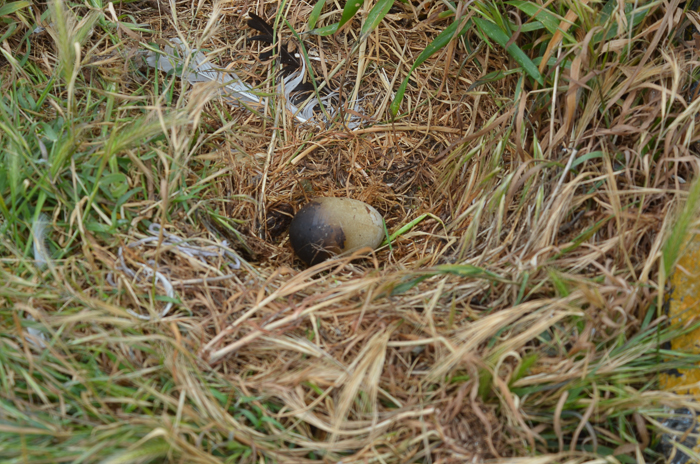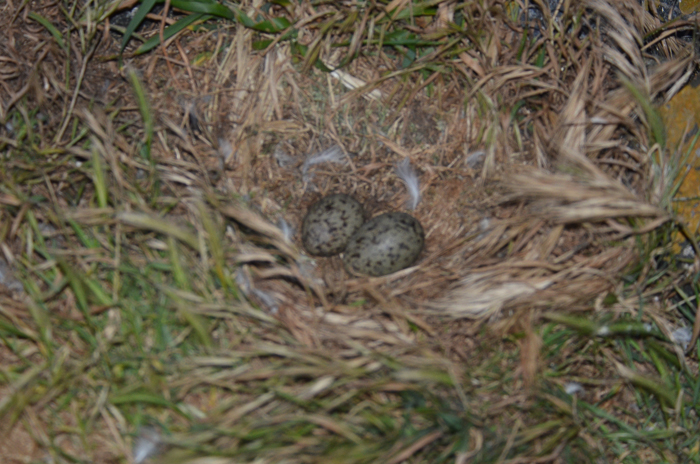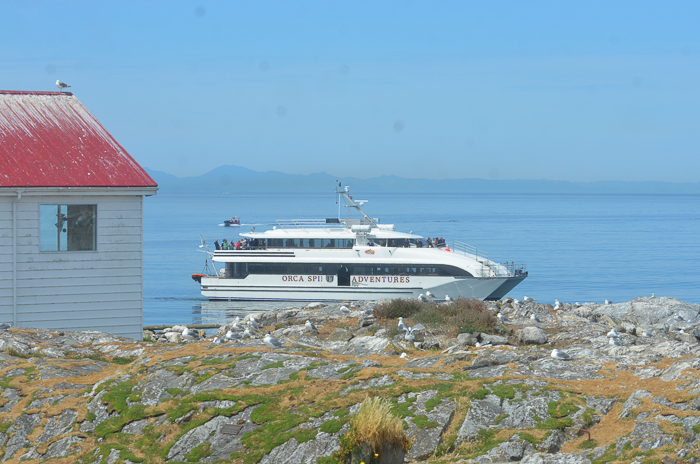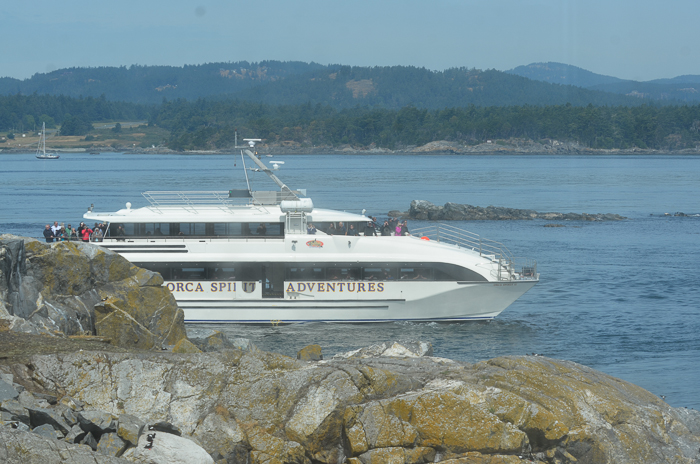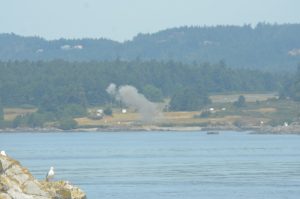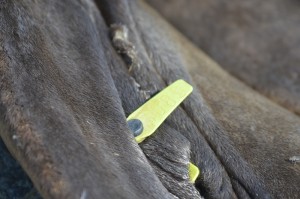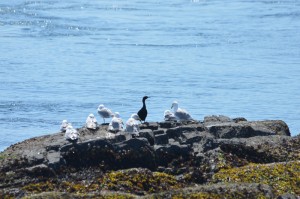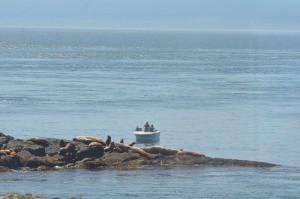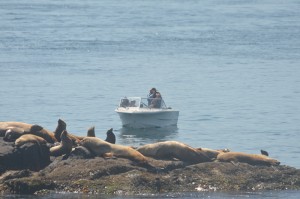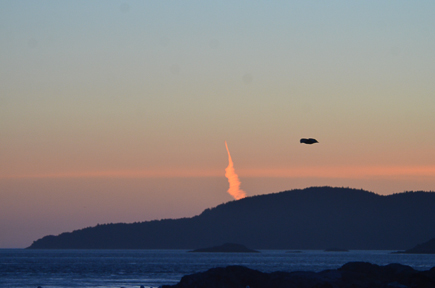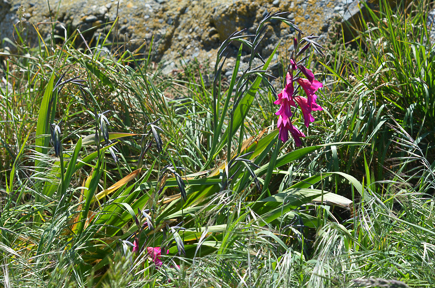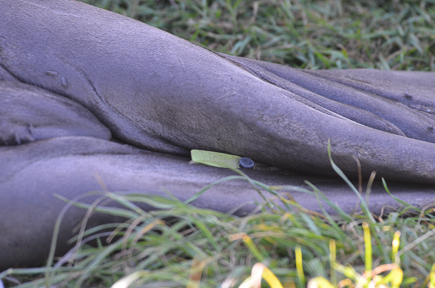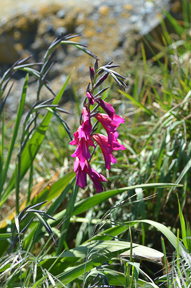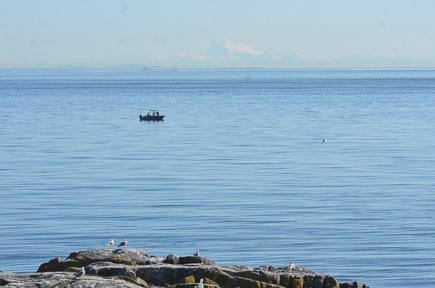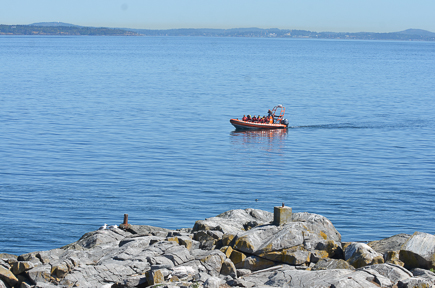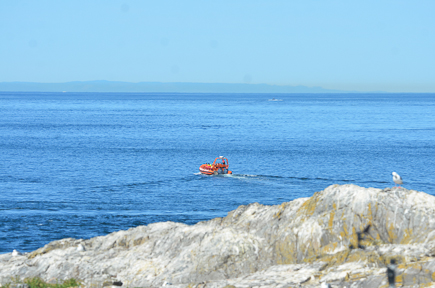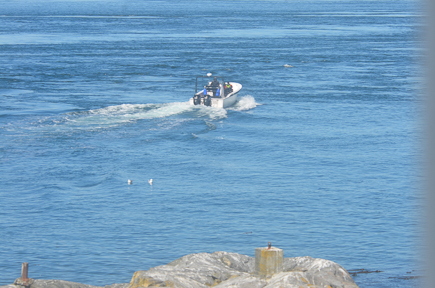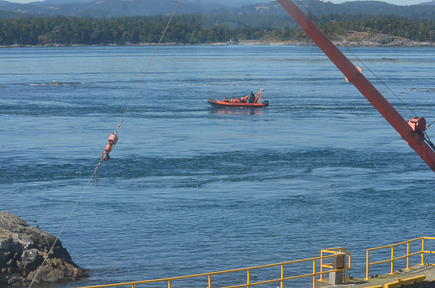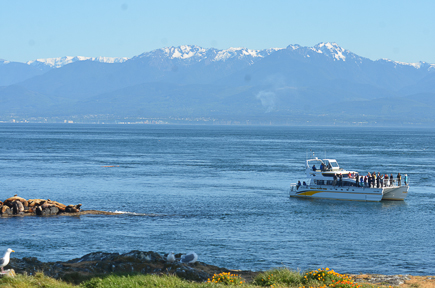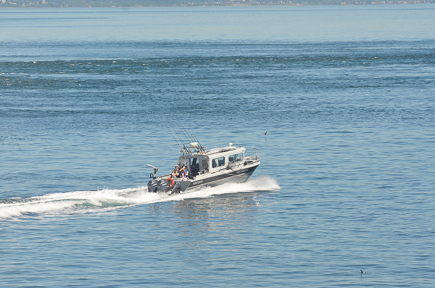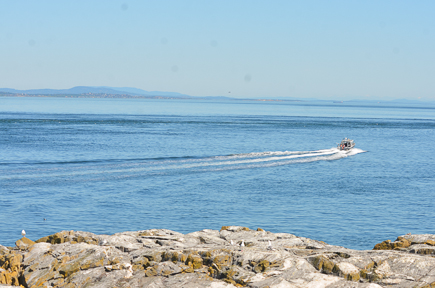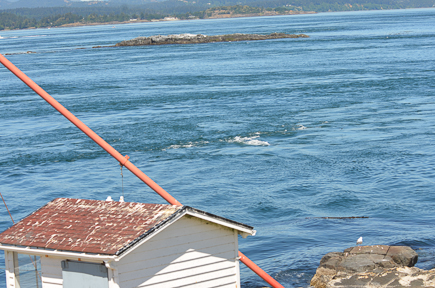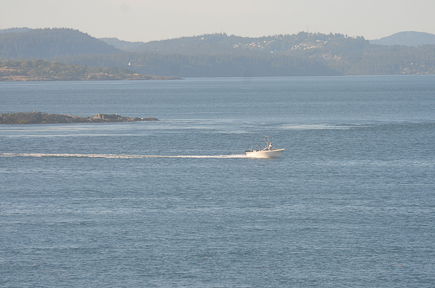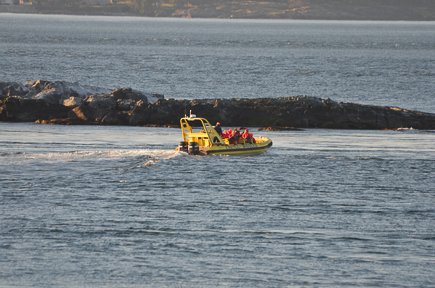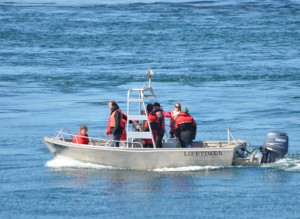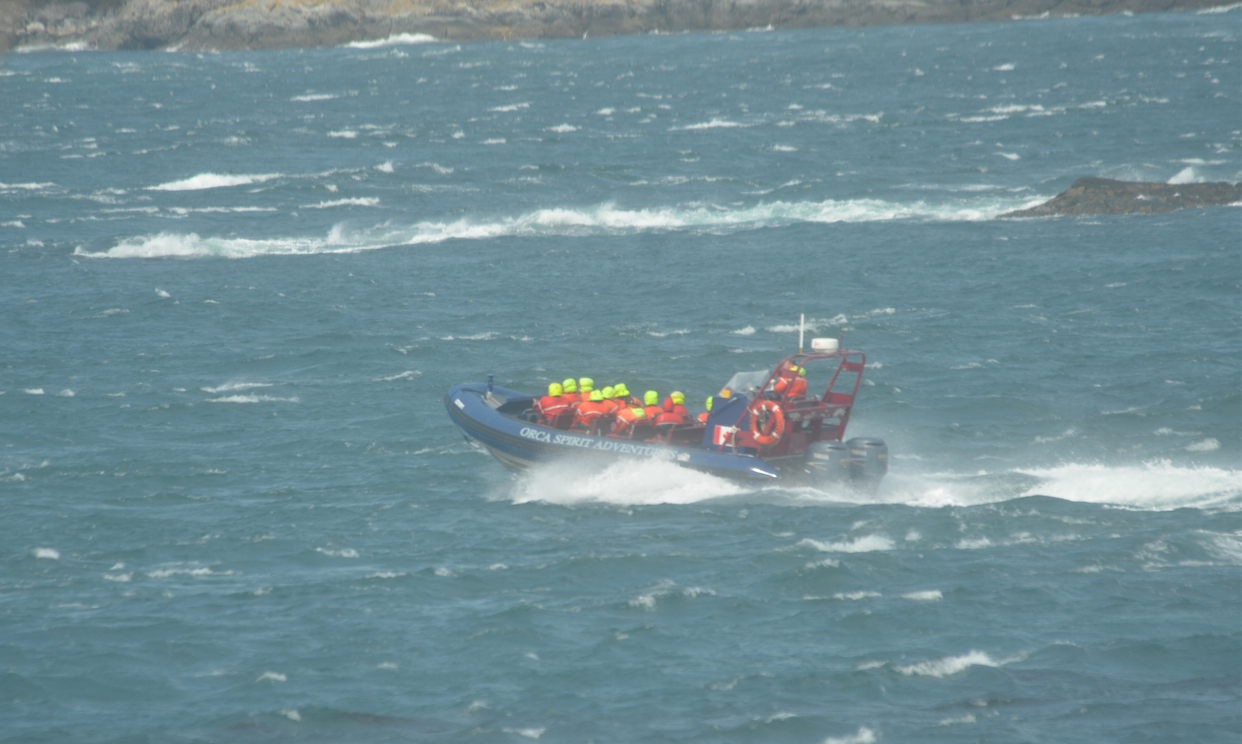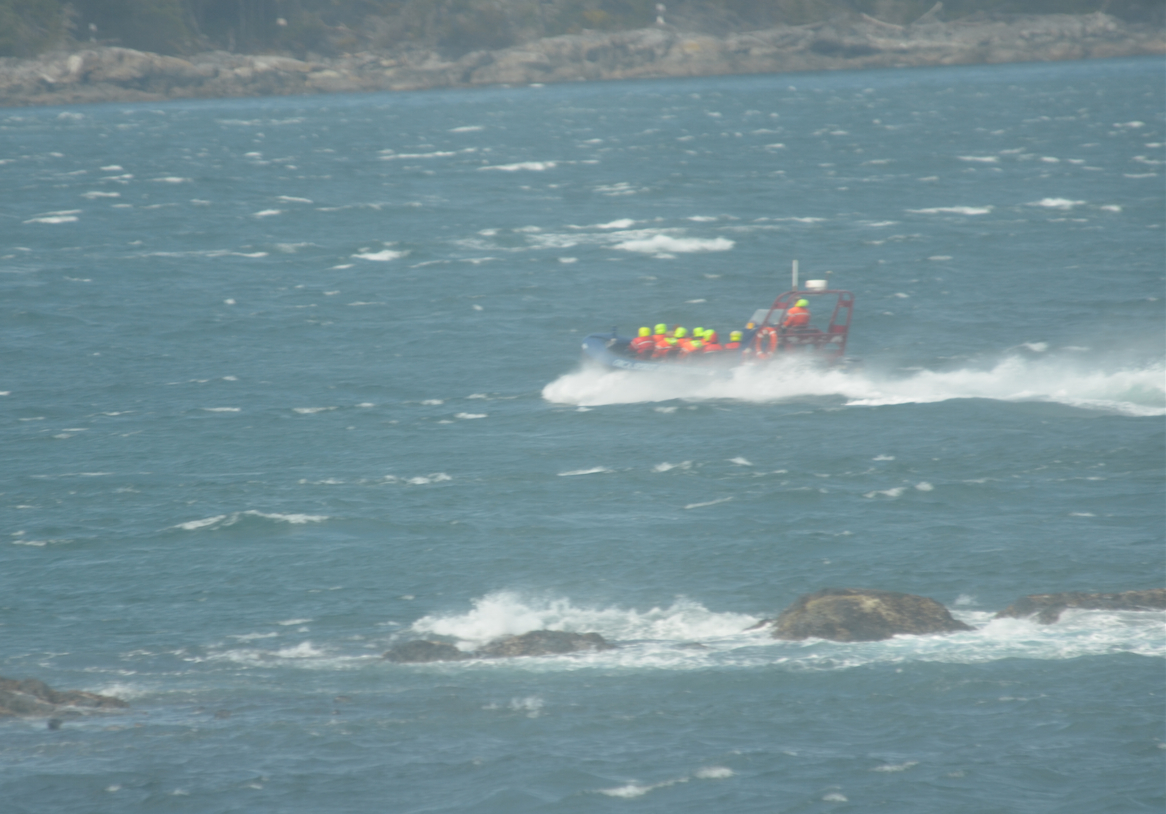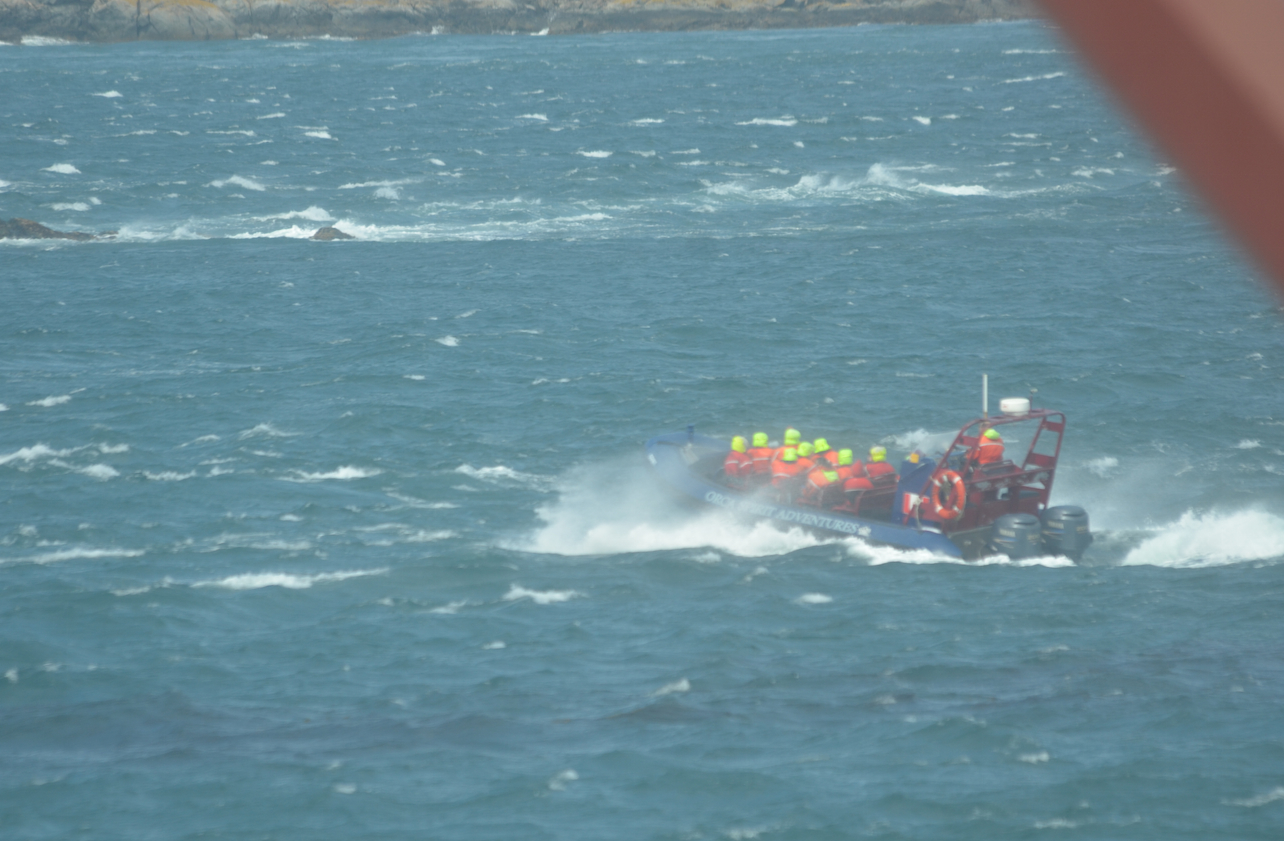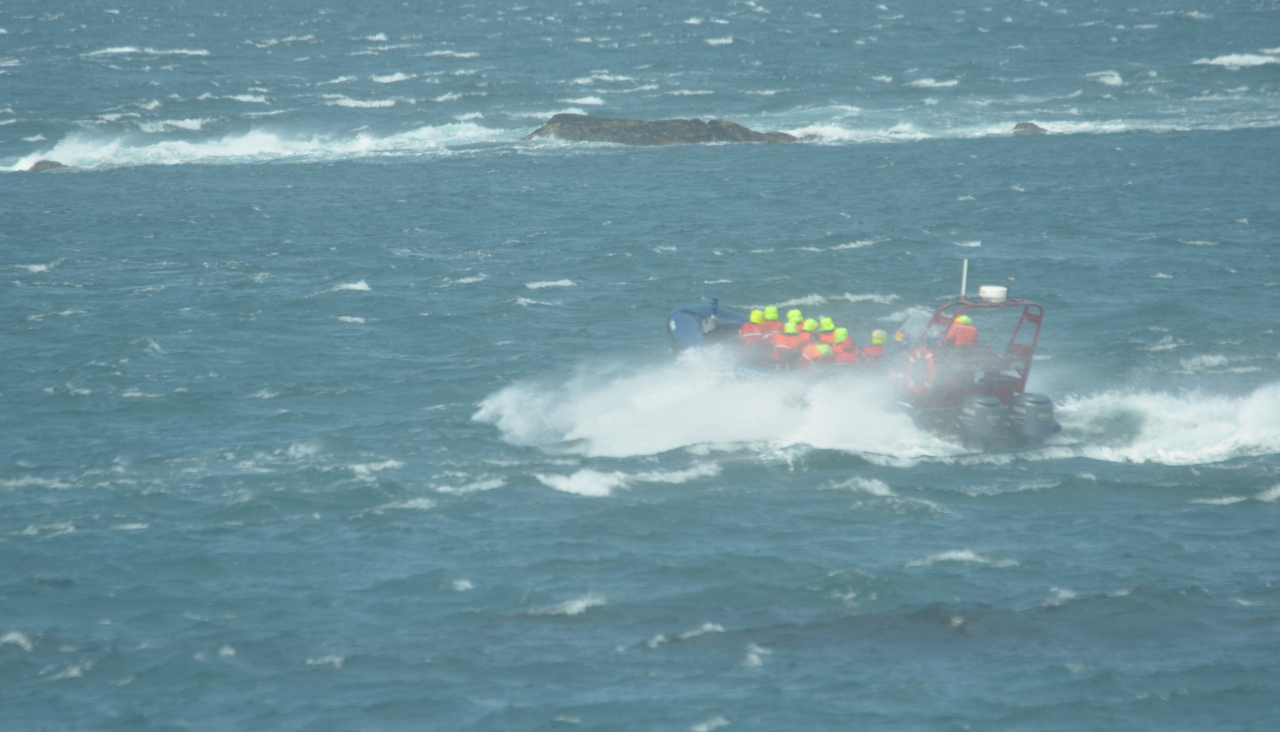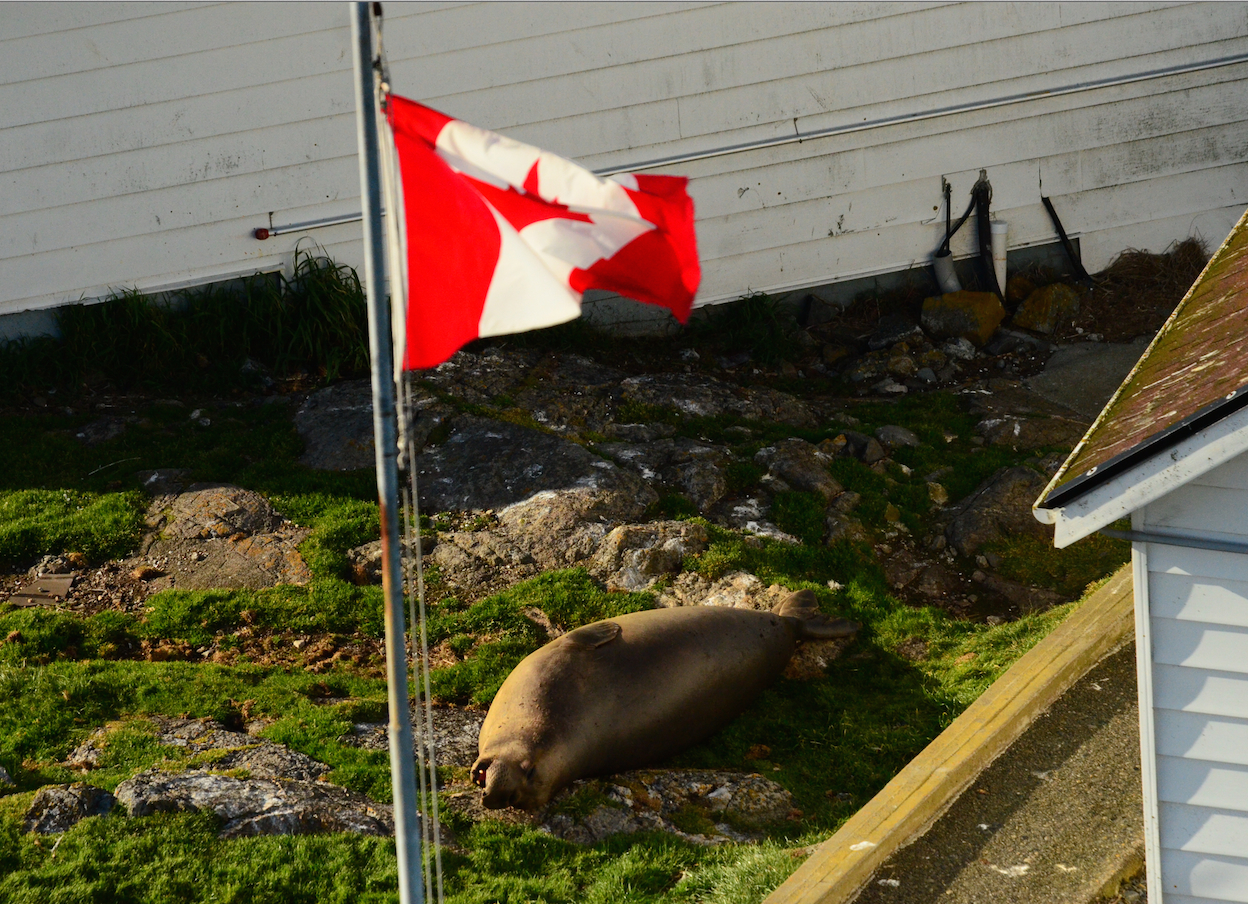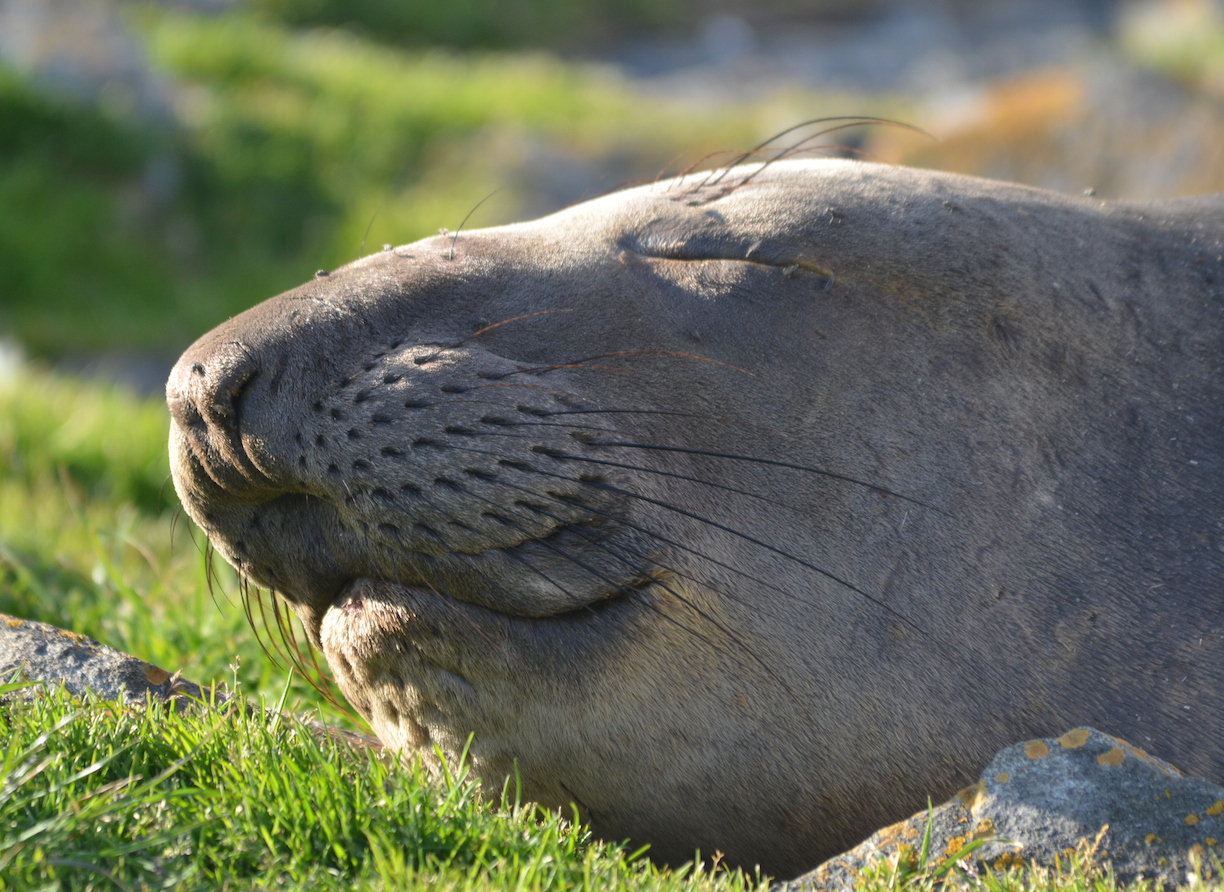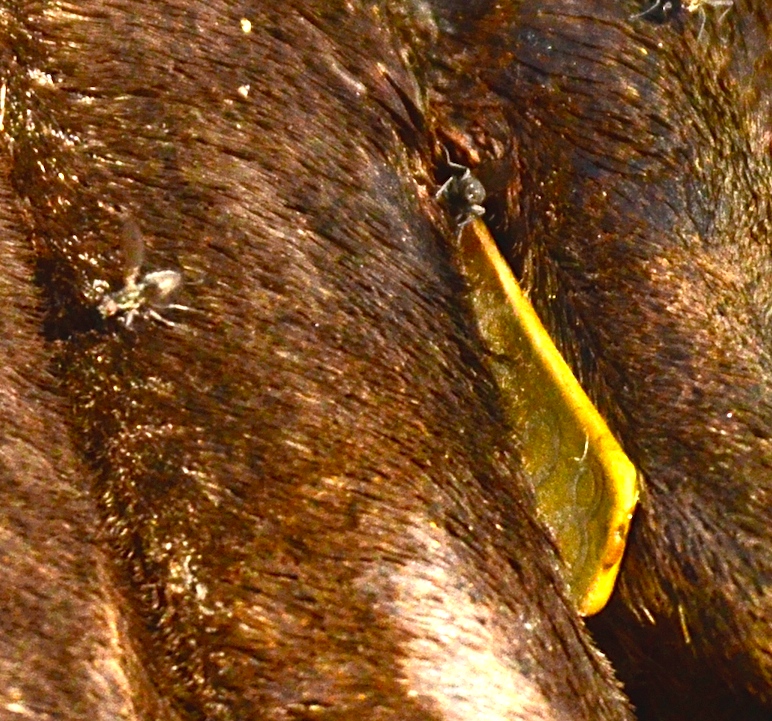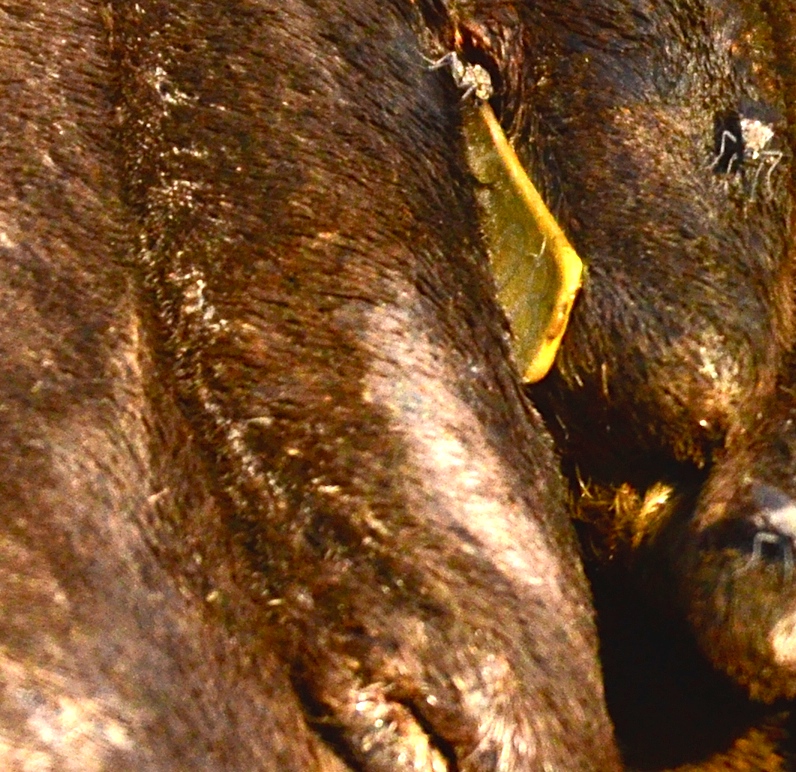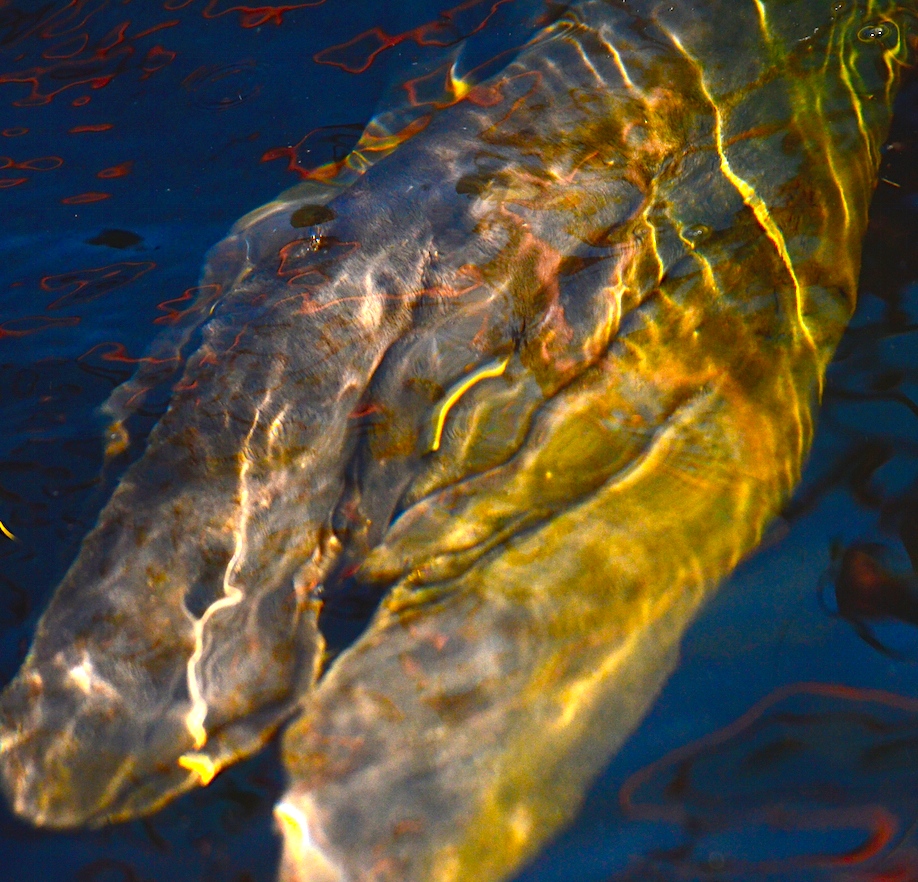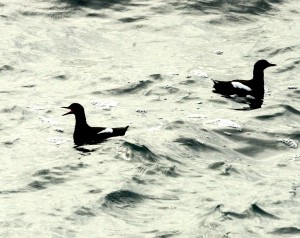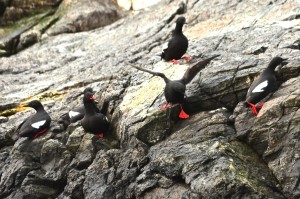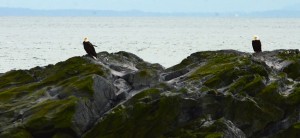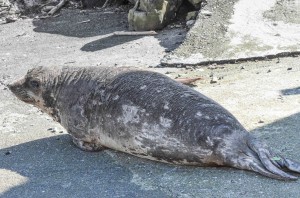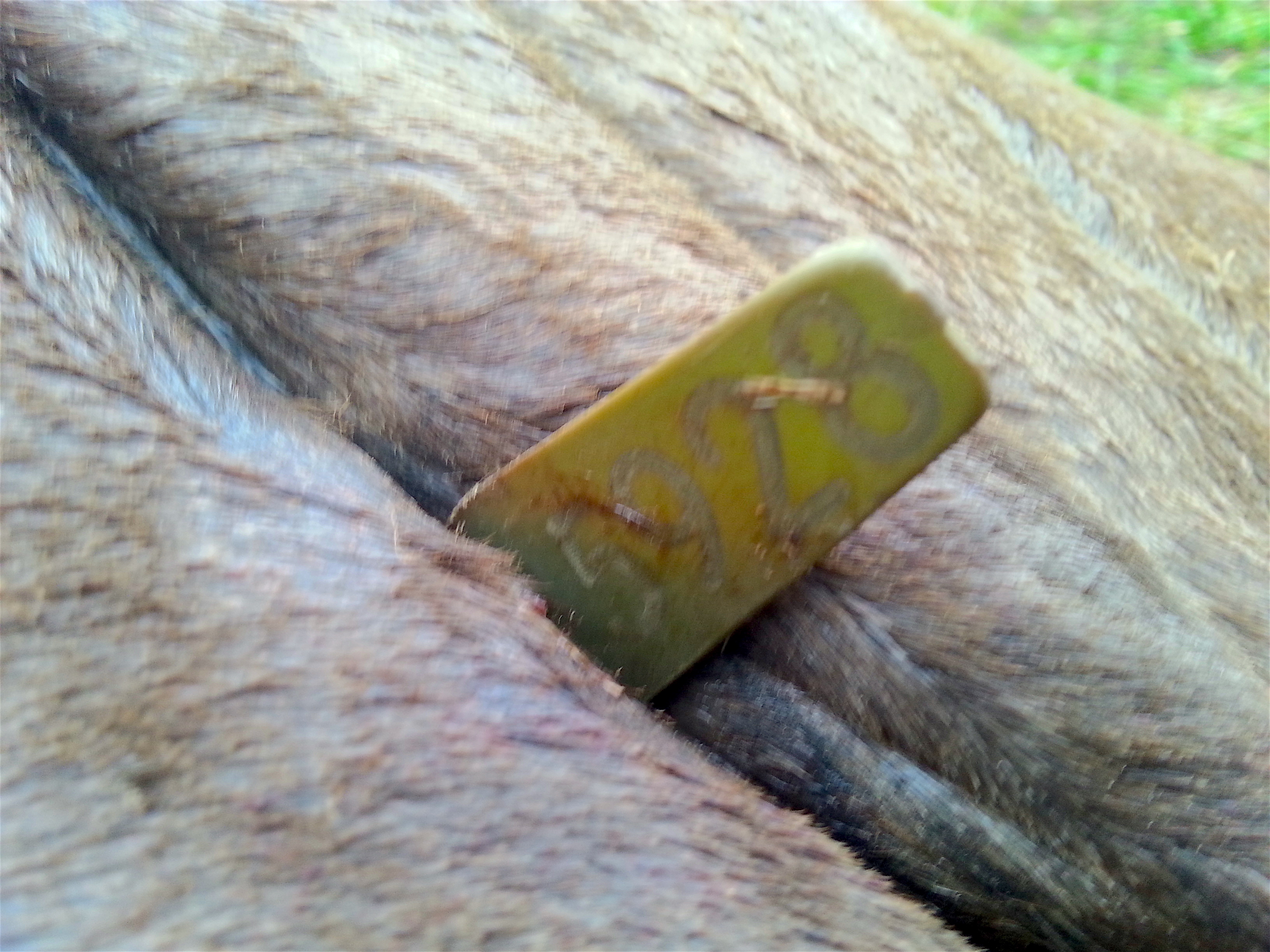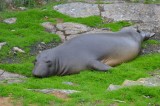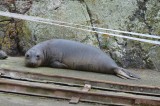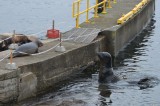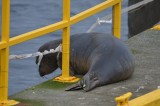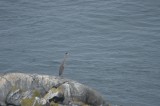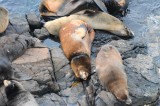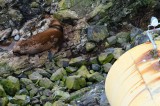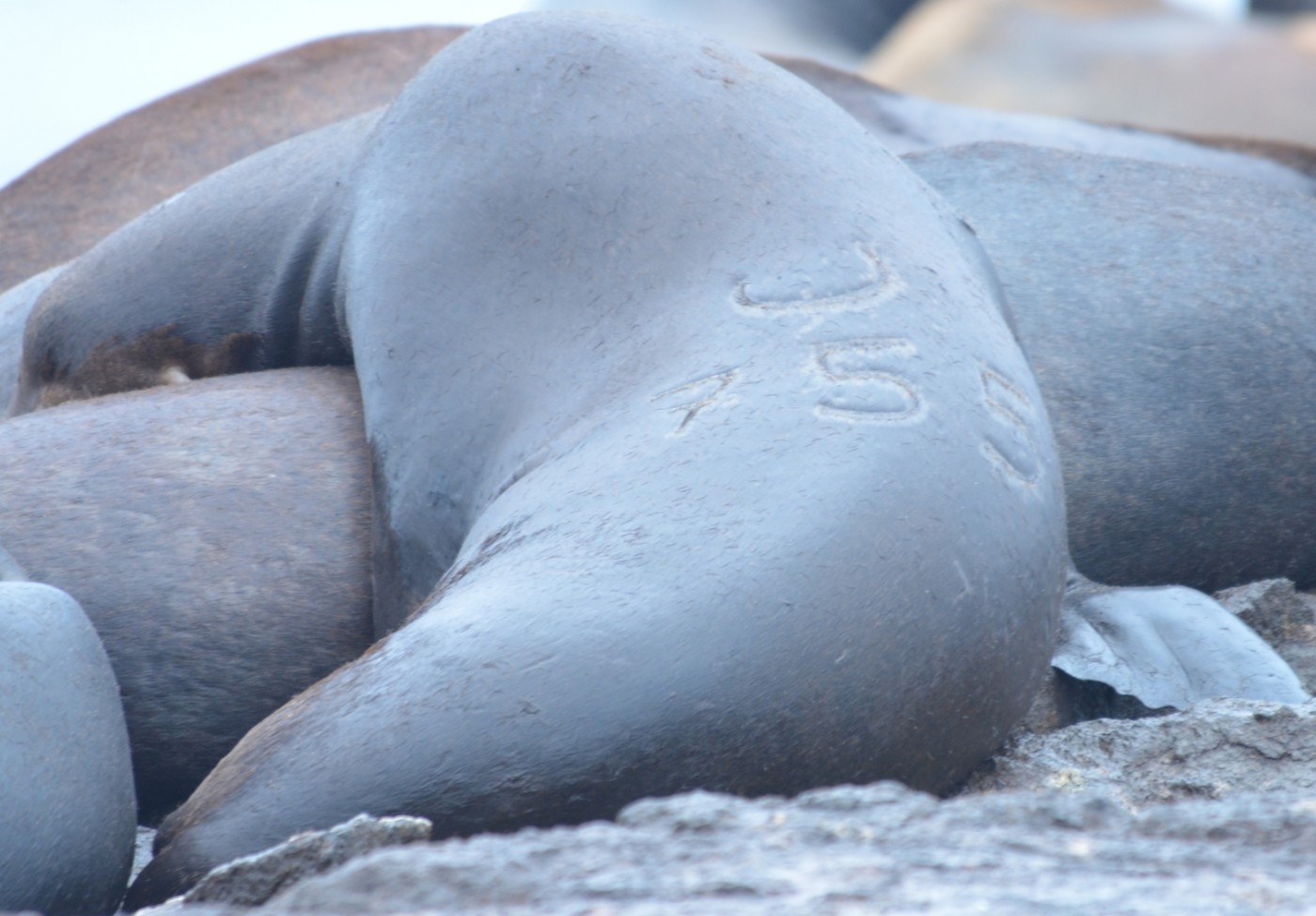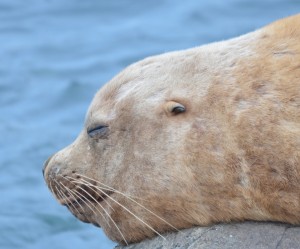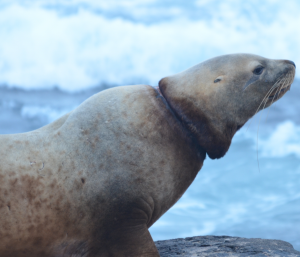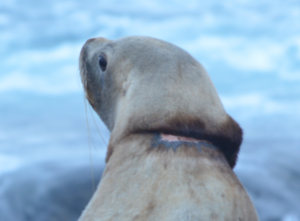Weather and Sea Conditions
The day started with a beautiful sunrise and then quickly clouded over, clouds pushed in by light, southeast winds. Late afternoon, the wind veered through southwest to a light westerly. The barometric pressure, which started at 1017hPa dropped all day and was below 1010 hPa by 19:30.
Light levels were the low today and the accumulated solar radiation for the day was just over 250 Ly, measured in Langleys. That was about half of yesterday’s sunshine. Although it was calm today, the forecast has a gale warning in effect and the west wind is expected to pick up to 35 knots tonight. Monday is expected to be windy, mainly cloudy with a 40 percent chance of showers.
Vessels
Victoria’s first cruise ship of the season, went past last night and today regular whale-watching vessels including Five-Stars and Pacific Explorer were back working in the protected area after an absence of at least a month and maybe more. The more regular visiting catamaran, 4-Ever Wild, cruised through carefully and respectfully. Several sports fishers passed through the reserve slowly, today and all fishing activity observed, was outside of the conservation area. There were many vessels in the vicinity, anchored and fishing for halibut, stretching out from Beechey Head to Constance Bank.
Ecological
Several branded sea lions were photographed and included in the gallery here. The two California Sea Lions were X279 (brand still very pink) and X 10_ , where _ represents a number not yet identified. U390, from the Columbia River region was also photographed. The branded Steller’s Sea Lion noted was 524R a migrant from southern Oregon. Beulah, the large female Northern Elephant Seal was back on Great Race, adorning the lawn at first light and seven other elephant seals can be seen on Middle Rock.
At least 200 Pigeon Guillemots were in and around Great Race in the morning, but gone by early afternoon. The eagles continue to chase gulls on Great Race as well as perching on North Rock, West Rock, South Rock, Middle Rock and Turbine. The geese do not seem to be bothered by the eagles and sometimes land right beside them. There were also over 30 Surfbirds resting here today, even though none were seen during the last census. They were in a mixed flock with Rock Sandpipers and Black Turnstone on the boulder area to the east of the main house.
I found an unusual little (~2.5 cm. long) fish on the marine railway this morning. It was very fresh looking, but dead and undamaged. It looks like a member of the myctophid family.
-
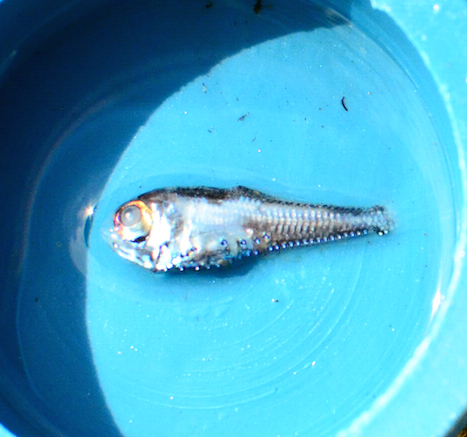
-
This tiny lantern fish is photographed here in a plastic cap from the beach.
-
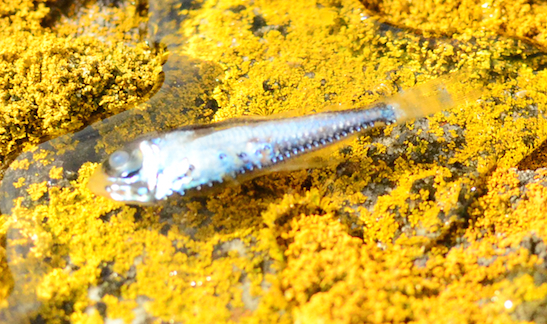
-
The yellow background in this photo of the Lantern Fish is a common nitrogen-loving lichen found on Race Rocks.
Also known as a lantern fish, this little myctophid has a typical upturned jaw and rows of fluorescent blue photophores along its abdomen and on its sides. The photophores are packed with bioluminescent bacteria and allow the fish to communicate with light signals in the dark. The eyes are very large (relatively) because these fish are usually in very low, light conditions. Myctophids are very common fish in the ocean, but are not commonly seen, as they usually live deep, in the twilight zone and only come up during their nightly, vertical migration. I am not sure how it ended up on the ramp but currents here could have played a part.
Chores/Visitors
I went off-island briefly this morning and everything worked smoothly. Chores were routine today and there were no visitors.
-
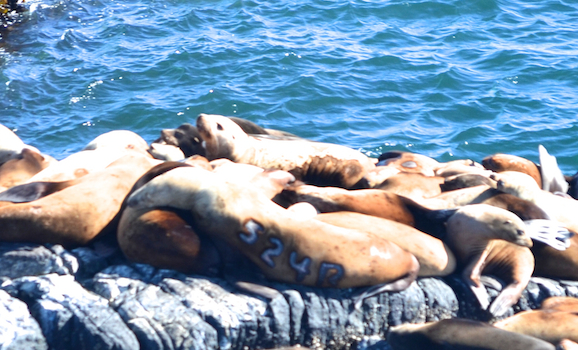
-
This Steller’s Sea Lion is branded with 524R, just visible on the right side, in the shadow.
-
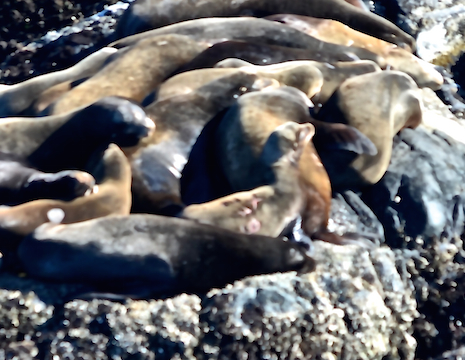
-
This California Sea Lion is branded with X279 and the brand is still pink.
-
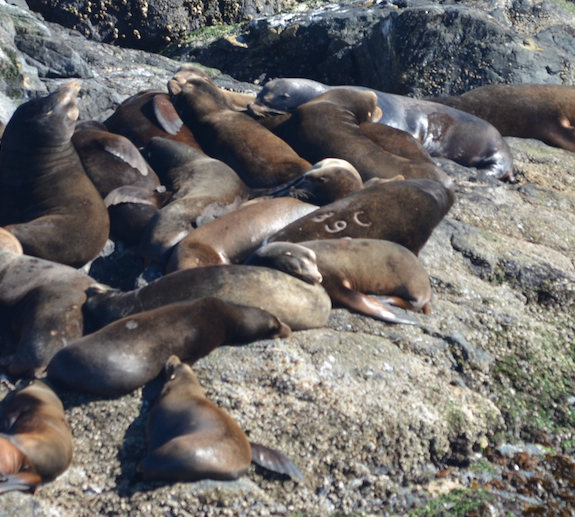
-
California Sea Lion # U390 can be seen in the right side of the photograph.
-
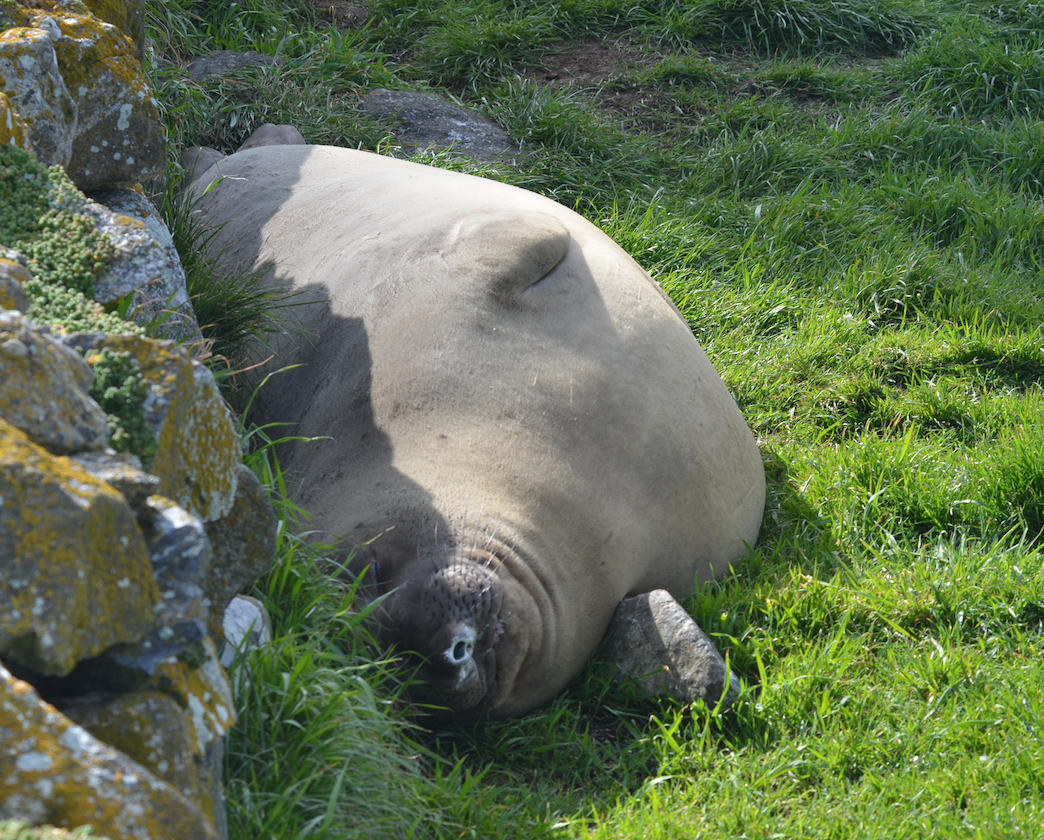
-
For some reason this animal likes to lie with rocks poking into her.
-
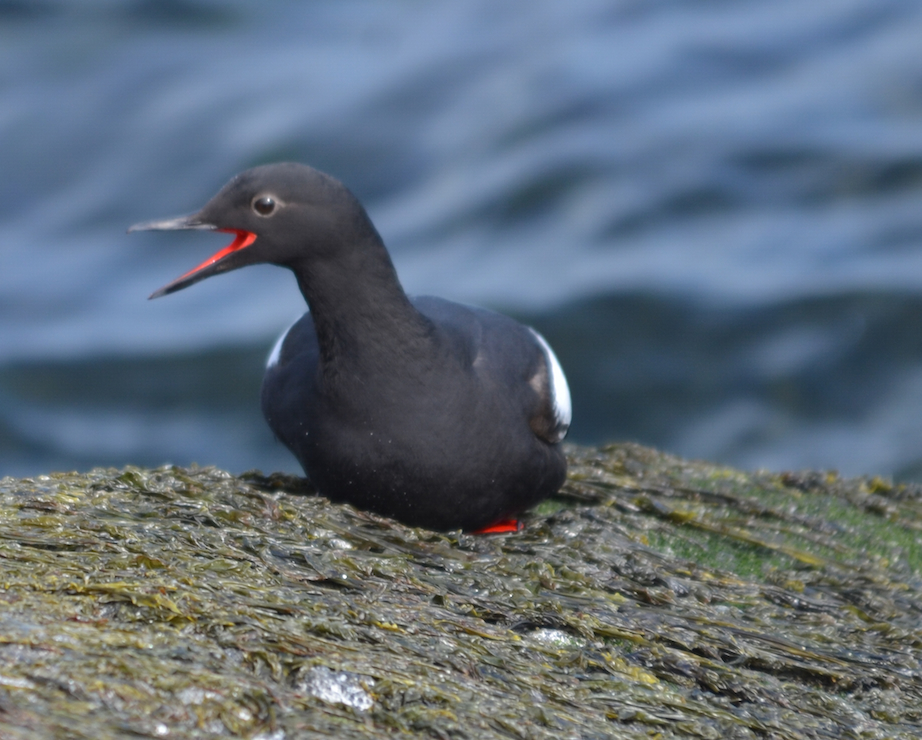
-
One of the few Pigeon Guillemots to come ashore today.
-
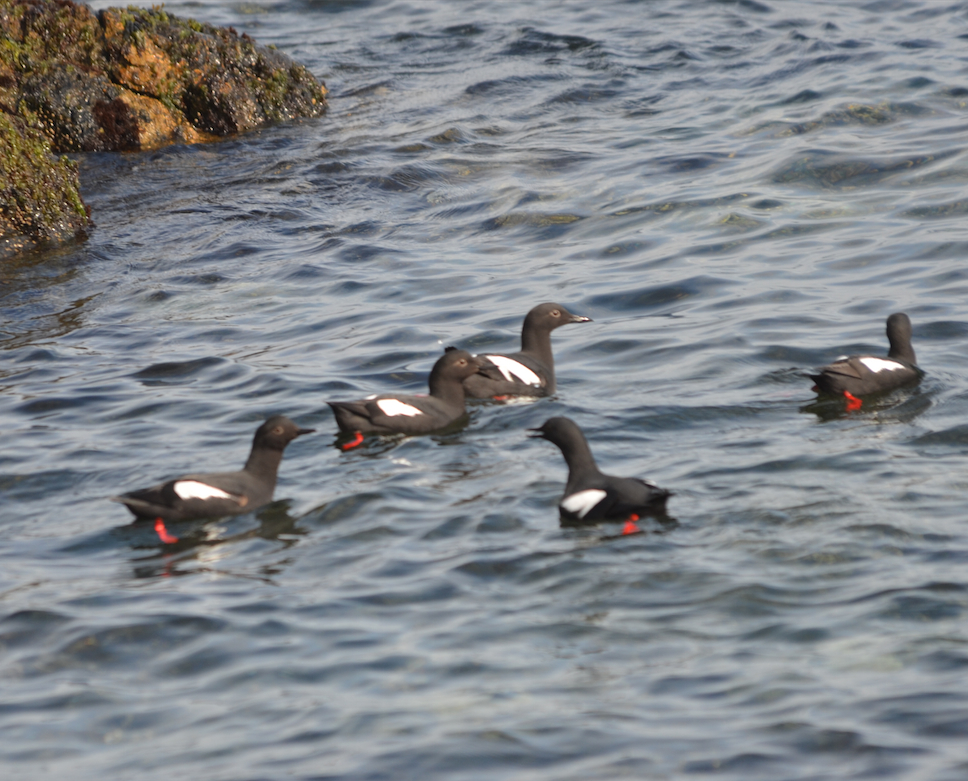
-
Pigeon Guillemots were seen in large numbers during the morning.
-
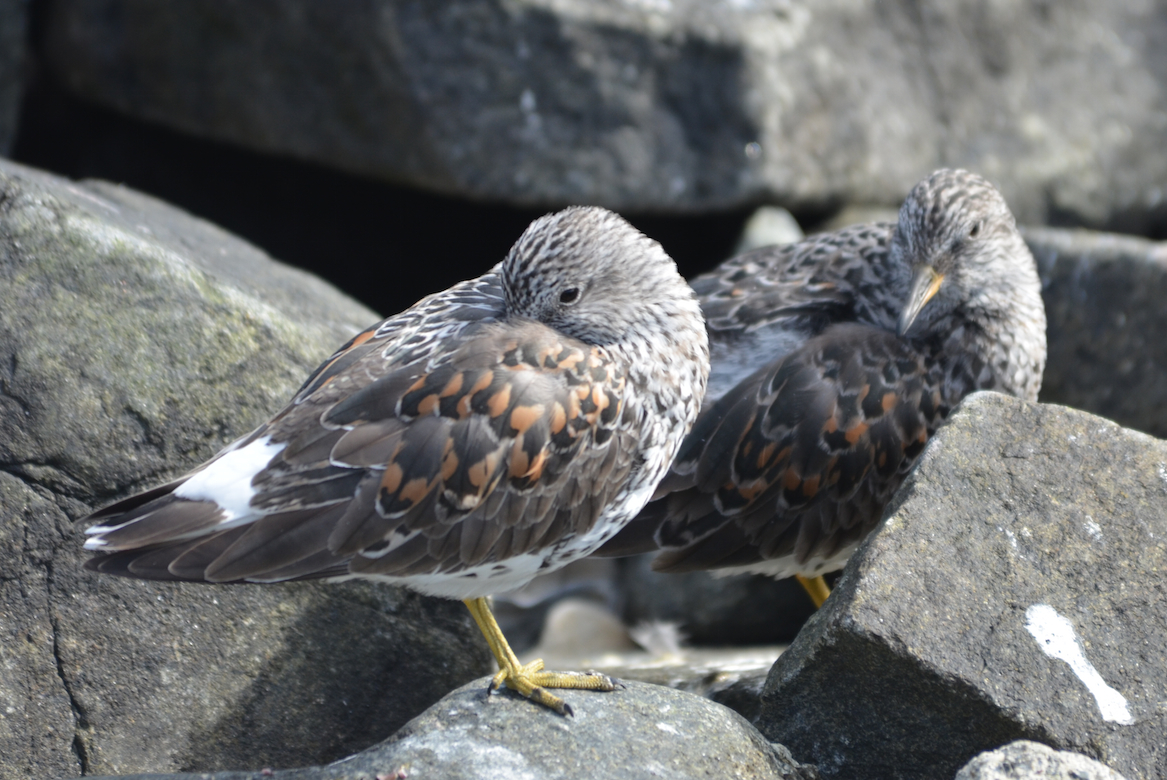
-
Surfbirds leave the coast in the summer and migrate up to the mountain ridges of the Alaskan slope in Alaska and the Yukon.
-
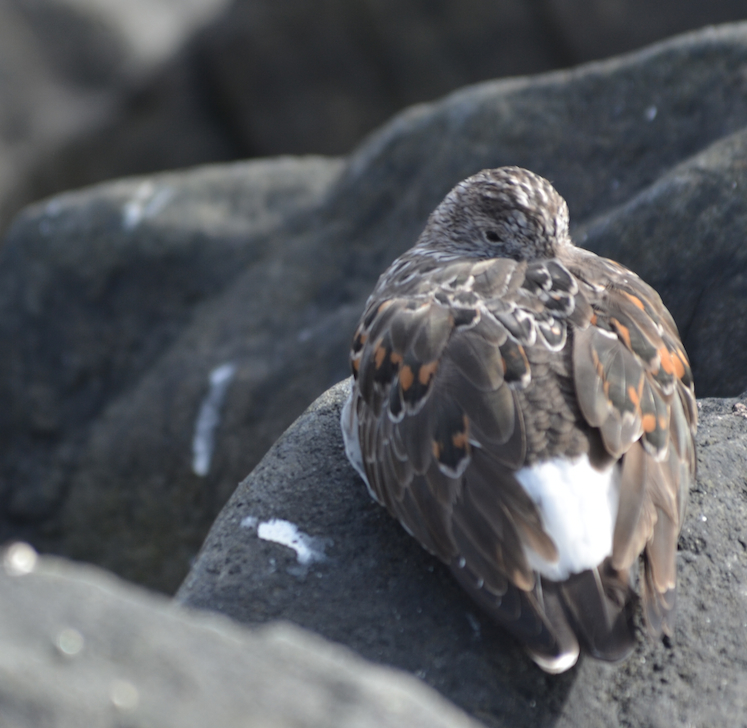
-
The Surfbird flocks seem to be passing in waves. Some days there are none, today there were 30 in one spot.
-

-
I find the Surfbird and Rock Sandpiper can be difficult to distinguish. The Surfbird’s white rump patch helps.
-

-
This Surfbird has been preeening and stretching and is all puffed up.

